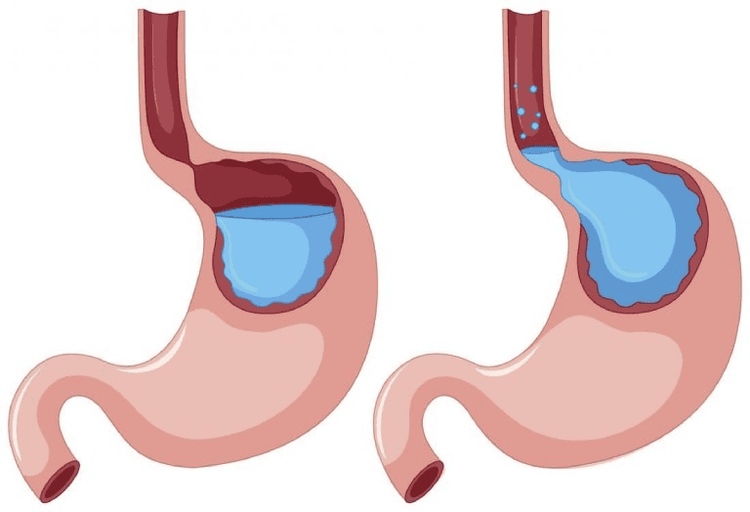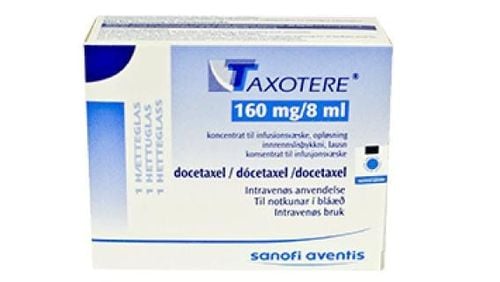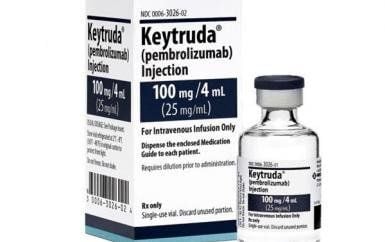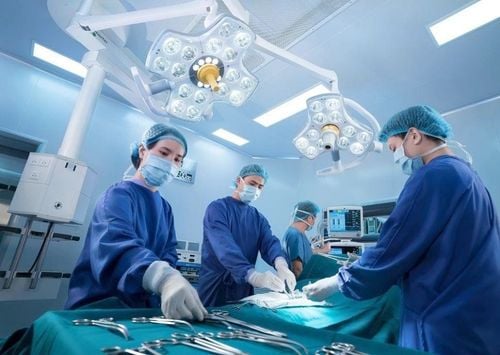This is an automatically translated article.
Laparoscopic gastric bypass is a procedure indicated for patients who cannot eat by mouth for a long time. Stomach cancers, cancers of the mouth, pharynx, esophagus,... are often indicated for this procedure.
1. What is a gastrostomy?
Gastric bypass is a procedure performed to create a hole in the stomach, through the abdominal wall to:
Temporarily decompress the stomach, avoiding complications of gastro-oesophageal reflux after the procedure. major abdominal surgery such as total gastrectomy with vagus nerve ablation. This procedure is often performed during surgery in patients who are elderly, have lung disease, or have difficulty feeding after surgery; Performed on patients who have difficulty eating or cannot eat due to obstructions in the gastrointestinal tract such as esophageal cancer, cardiatric cancer, esophageal stricture,... There are 2 forms of gastric bypass. are temporary openings and permanent openings.
1.1 Open temporary traffic
To open a temporary gastrostomy, the doctor uses a catheter to put in the stomach.
1.2 Permanent gastric bypass
In the case of a permanent gastric bypass, the doctor uses the stomach wall to make the catheter.
When performing gastric bypass, it is necessary to adhere to 2 important principles: Perform the procedure simply and quickly because the patient is thin and exhausted; keep the food from spilling out when it is pumped into the stomach.

Mở thông dạ dày nhằm tránh các biến chứng trào ngược dạ dày-thực quản
2. Pathologies related to gastric bypass surgery
Some conditions may need to perform gastric bypass surgery, including:
Esophageal tumor: The esophagus is the first part of the digestive tract, connecting the lower pharynx and the stomach cardia. The esophagus is responsible for carrying food from the mouth to the stomach for digestion. Because the esophagus is narrow and long, if there is an esophageal tumor, it will cause obstruction and require a gastric bypass procedure; Tongue root cancer: Normally, tongue root cancer does not affect the ability to swallow. However, when the tumor is large, filling the palate will make it difficult for the patient to eat and drink, it is necessary to open the stomach to nourish; Lower pharyngeal cancer : In the cases of lower pharyngeal cancer in the later stages, the large tumor will press on the mouth of the esophagus, making it difficult to swallow and requiring opening of the stomach to nourish; Mediastinal tumors: Mainly anterior mediastinal tumors. When the tumor is large, it will press on the esophagus, making it difficult to swallow and need to be nourished by opening the stomach; Bronchial cancer: When bronchial cancer enters a late stage, the cup squeezes and invades the esophagus, making it difficult for patients to swallow, leading to a gastric bypass to nourish; Some other diseases: Esophagitis, thyroid cancer, esophageal perforation, Lymphoma,...
3. Detail method of gastric bypass by laparoscopic surgery
Laparoscopic gastrostomy is a procedure to insert a tube through the abdominal wall into the patient's stomach without open surgery. This method helps to provide long-term nutrition in patients with inability to swallow, facilitating the care of patients requiring long-term feeding through a catheter.
3.1 Indications/contraindications
Indications
Long-term enteral feeding due to oropharyngeal cancer, esophageal cancer that cannot be operated on; Temporary nutrition in patients with esophageal stricture due to burns, inflammation, severe trauma to the skull and face, after major abdominal surgery need additional nourishment; Nurturing in cases of poor nutrition due to neurological disorders after cerebrovascular accident, brain tumor, prolonged coma; elderly people with mental disorders and malnutrition; Severe malnutrition in cancer patients, respiratory failure, heart failure. Contraindications
People with pre-existing gastric disease such as peptic ulcer disease, gastric varices, portal hypertension or gastric cancer; People with liver and spleen are too big; People with severe blood clotting disorders; Patients with obesity, ascites; People with kidney failure are being treated with peritoneal dialysis; The patient had a total gastrectomy; People with high-grade small bowel fistula or small bowel obstruction.
3.2 Preparation for surgery
Implementation personnel: Surgeons, anesthesiologists and nurses; Technical facilities: Endoscope, endoscope with channel to perform the procedure; biopsy forceps; leather sewing needles, sewing thread; gauze, cotton, bandages; endoscopic gastric opening kit; Patient: Discussed about the purpose, procedure and possible complications of laparoscopic gastric bypass surgery; be carried out the necessary tests; fasting for at least 6 hours; cleaning the surgical area; prophylactic antibiotic use; sign an undertaking to agree to the procedure; Medical records: Prepare and complete as required.

Hồ sơ bệnh án của bệnh nhân cần hoàn thiện trước khi phẫu thuật
3.3 Performing surgery
Check the records and check the patient, make sure the right person, the right disease; Gastroscopy to check the condition of the stomach and duodenum; Endotracheal anesthesia ; The patient's position is supine, head high, legs low 15 - 30°; The gastric surgery team stands in a suitable position convenient for manipulation; Inflate the stomach so that the stomach wall is close to the abdominal wall; Determining the location of the trocar: The best position for catheterization is midway between the anterior surface of the antrum or the border between the antrum and the stomach body. On the skin, the trocar line is usually located in the midline, connecting the left border and the umbilicus; Use a sharp knife to cut the skin about 1cm, use a pince to dissect deeper, poke the trocar through the skin, through the abdominal wall into the stomach cavity (closely monitored by endoscopy); Insert the soft wire through the trocar into the stomach, insert the biopsy pliers to pair the wire, then pull the machine and the biopsy pliers out; Tie a flexible wire to the threaded end of the catheter, slowly pull the tip on the outside of the abdominal wall to pull the catheter into the stomach until the inner end of the catheter is pulled close to the stomach wall; Check the position of the catheter and check for bleeding; Fix the catheter tip outside the abdominal wall, suture under the skin; Cut the thread, leave a 15cm long catheter, install more catheter cap and then bandage, end the procedure.
3.4 Follow-up after surgery
For patients to use prophylactic antibiotics: Augmentin 1g intravenously before and 4 hours after surgery; Feeding can be carried out for the patient 24 hours after the procedure or feeding at a suitable time as prescribed by the doctor.
3.5 Some complications
Mild complications
Semi-catheter occlusion syndrome, abdominal pain, low-grade fever; Gastroesophageal reflux ; Infection of the abdominal wall, possibly mass formation in the abdominal wall; Hematoma in ulceration around the catheter site; Pneumoperitoneum; Severe complications
Stomach and colon leaks; Peritonitis ; Stomach bleeding; Necrosis of the stomach wall; The catheter slipped, the catheter fell into the intestine, causing intestinal obstruction; Laryngeal spasm, reflux of gastric juice into the lungs, cardiac arrest,... during the procedure. With the above complications, the doctor will take measures to treat according to the standard protocol.
The endoscopic gastric bypass method limits infection and reduces patient discomfort. The procedure is fast, 10-15 minutes, safe, with few complications, and minimizes surgical invasiveness. When prescribed treatment with this method, the patient should absolutely coordinate with the doctor's instructions.
To register for examination and treatment at Vinmec International General Hospital, you can contact Vinmec Health System nationwide, or register online HERE.
SEE ALSO:
Gastrostomy: What you need to know Gastrostomy for esophageal cancer patients How to feed patients through a gastrostomy tube













